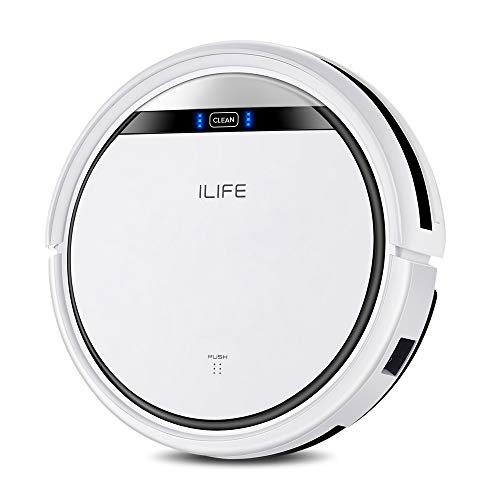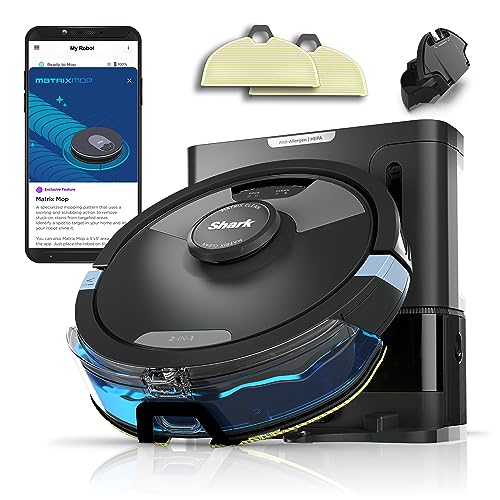
Robot Vacuum Mops
Ajouter un commentaire PoursuivreAperçu
-
Secteurs Manufacturier
-
Offres d'emploi publiées 0
-
Vu 182
Description de l'entreprise
What’s Holding Back The Best Robot Vacuum 2023 Industry?

Cleaning your floors isn’t always simple, but robot vacuums make it easier. The best ones will remove dirt, crumbs and shed pet hair, and more.
While they’re still unable to perform as well of a job as a traditional vacuum cleaner however, they’ve come a long way over the last few years. They’re smarter, more powerful, and (marginally better) at avoiding the chair leg.
Smart Mapping
Robot vacuum cleaners employ instruments for navigation such as sensors and lasers to navigate through your home. They remove pet hair, crumbs and dirt from hard floors such as tile, wood, and laminate, and carpets with a low pile. The most sophisticated robots map your home, so that they can keep track of where they’ve been and avoid bumping into obstacles like chairs, sofas and bookshelves that you might prefer to keep out of the way. You can make use of your smartphone’s app to set up zones that prohibit your robot not to enter rooms it doesn’t want to clean.
Robots that have advanced mapping capabilities, such as the Roomba j7, use processor-powered cameras and onboard sensors to avoid obstacles and see them. Then, you can allow it to complete the task without having to continuously monitor the status of your floorplan, or manually move obstacles from the robot’s way. The TP-Link Tapo RV30 Plus is a robotic that does mopping and vacuuming, which means it’s a one-stop solution to keep your home tidy. It has a great suction feature and can be used with Alexa or Google Assistant. It also has a convenient self-emptying feature, and can be used as a security camera.
A less expensive robot that vacuums, mops and can even be used as a robot trashcan, the Roborock Q Revo is a good choice for homes that don’t need the advanced features of higher-end models. However, it has a few disadvantages compared to the Roomba J7 and S8. It’s got only one brush, not dual roller brushes, meaning it might not be as effective in removing larger pieces of debris like socks and shoes. It does not have AI obstacle avoidance, so you may need to clear obstructions before you run.
The iLife A4s Pro robot is a simple reliable and reliable Robot Vacuum Mops that is ideal for those who appreciate simplicity and efficiency. It’s less than $200, and offers strong, consistent suction on hardwood and low-pile rug, while avoiding tangles. It’s not very advanced however, it’s effective. It is also compatible with voice commands. You can set it up to run a program, or create no-go zones using the app.
Object Detection
Object-avoidance technologies can make or break the ability of a robot vacuum navigate around your home. Some models on our list have sensors (or even cameras) which help your robo-cleaner avoid common traps for robots such as cords, toys for children and pet mess. iRobot’s Roomba J7 is among the most impressive examples of this kind of technology in action. It also comes with a stylish base that automatically emptys the dustbin so you don’t need to.
In our testing, we set up the robotic cleaner in a home with a large size and were amazed by how quickly and thoroughly the floors were cleaned without getting sluggish. It has impressive maneuverability and can reach places most standup vacs never reach, such as under sofas and under beds. It also has a great suction, a massive 500 ml dustbin and an over two hours of runtime. However, it lacks the ability to set zones that are not allowed to be used and its detection of objects is a bit hit-or-miss and we did see it hit things a few times during our tests (resulting in a few tipped vases).
It’s important to keep in mind that no matter how smart the robot vacuum is it isn’t going to replace your regular upright or canister vacuum. It’s not equipped to clean carpets that have been heavily soiled. It’s not able to reach ceilings or other difficult-to-access areas. It’s an excellent addition to your regular cleaning routine to remove hair, pet dander and other hair.
Sensor systems are built into the majority of robot vacuums to assist them navigate around obstacles and stairs. They can sense when they are about to fall down the stairs, for example, and can also recognize cluttered spaces and move around them. If you’re not careful your robot-cleaner could get stuck on a shoe, cord, or other object.
Some robot vacuums are equipped with mapping capabilities that allow them to draw an precise floor plan of your home and pinpoint themselves. This allows them to know which areas they’ve already cleaned and avoid the hassle of going over the same spots. This allows them to continue the same place they left off in the event that they have to return to the charging dock.
Self-Emptying
A robot vacuum that automatically empty its bins of dust once it gets full is an incredible benefit. Some models even have windows so you can see when the bin needs to be emptied. This is a great option for anyone with pets or children who tend to create more mess than adults.
The majority of robot vacuums let you select whether the machine will be controlled by a remote or an app for your smartphone, or by voice commands. They also have a variety of digital functions, including maintenance and scheduling suggestions. If you set the right settings, you can program your robot to clean at a set time or on an annual basis. You can also program the robot to clean and map out specific areas of your home.
Some of the most intelligent robot vacuums we’ve tested come with built-in cameras as well as smart sensor technology that allows them to create maps of your home. These maps can be saved to the robot’s app so you can easily navigate to specific rooms or areas of your home. Some of these systems can even keep track of furniture placement and note transitions from hard floors to carpet.
The best smart vacuums can save you time by automatically mapping and cleaning entire homes and keeping detailed records of cleaning sessions. You can access the records via an app for your smartphone or tablet. The majority of them can be connected to your smart speaker, so you can control them via voice commands.
TP-Link Tapo RV30+ is self-emptying robotic that delivers outstanding performance for a reasonable price. It can clean hardwood floors and low-pile carpets, and remove pet hair and other particles. It’s not as sophisticated as some of the other robots we’ve reviewed however, it does what it does well.
The model’s tanks-like wheels allow it to go over obstacles like tangled cords and high transitions between rooms. It has a large bin that does not need to be empty manually, and can recharge itself and restart cleaning when it is unable to continue cleaning. It’s more expensive than the other robotic vacuums we’ve tested however it has powerful suction with simple controls to deliver an excellent value.
Voice Control
The majority of robot vacuums can be controlled via a remote control or an app for a smartphone. Certain robot vacuums can be operated by voice commands through smart speakers such as Amazon Echo or Google Home. This is a great option if you have small pets or children who might hinder your cleaning session, or if you’re too tired to manage the robot manually.
The majority of models come with an automatic mode that works without your input. Simply press a button on the robot or within the app, and it will start sucking up food, dirt, crumbs, and pet hair. They can be programmed to clean in accordance with an established schedule, making them perfect for those who just want to make a plan and forget.
Certain models that are more expensive include a sophisticated feature which uses artificial intelligence to scan and detect obstacles within your home. They can detect things such as power cords, stairs as well as furniture, and even identify different types of flooring. This can help to avoid the dangers which is particularly useful in homes with a lot of carpets and flooring materials that are difficult for robots to navigate.
Some robots come with less basic abilities for object detection but they are able to accomplish the task. One example is the TP-Link Tapo RV30 plus, that has the sleek elegant, easy-to-use design of a WiFi hub, but offers the capabilities of a top-of-the-line bot. It has a strong suction that can take care of dirt and debris on medium pile flooring and carpet. The short and squat-shaped side brush is less likely to get stuck in cords or shoes. The hybrid roller brush, which is made up of bristles and plastic, provides an effective cleaning.





